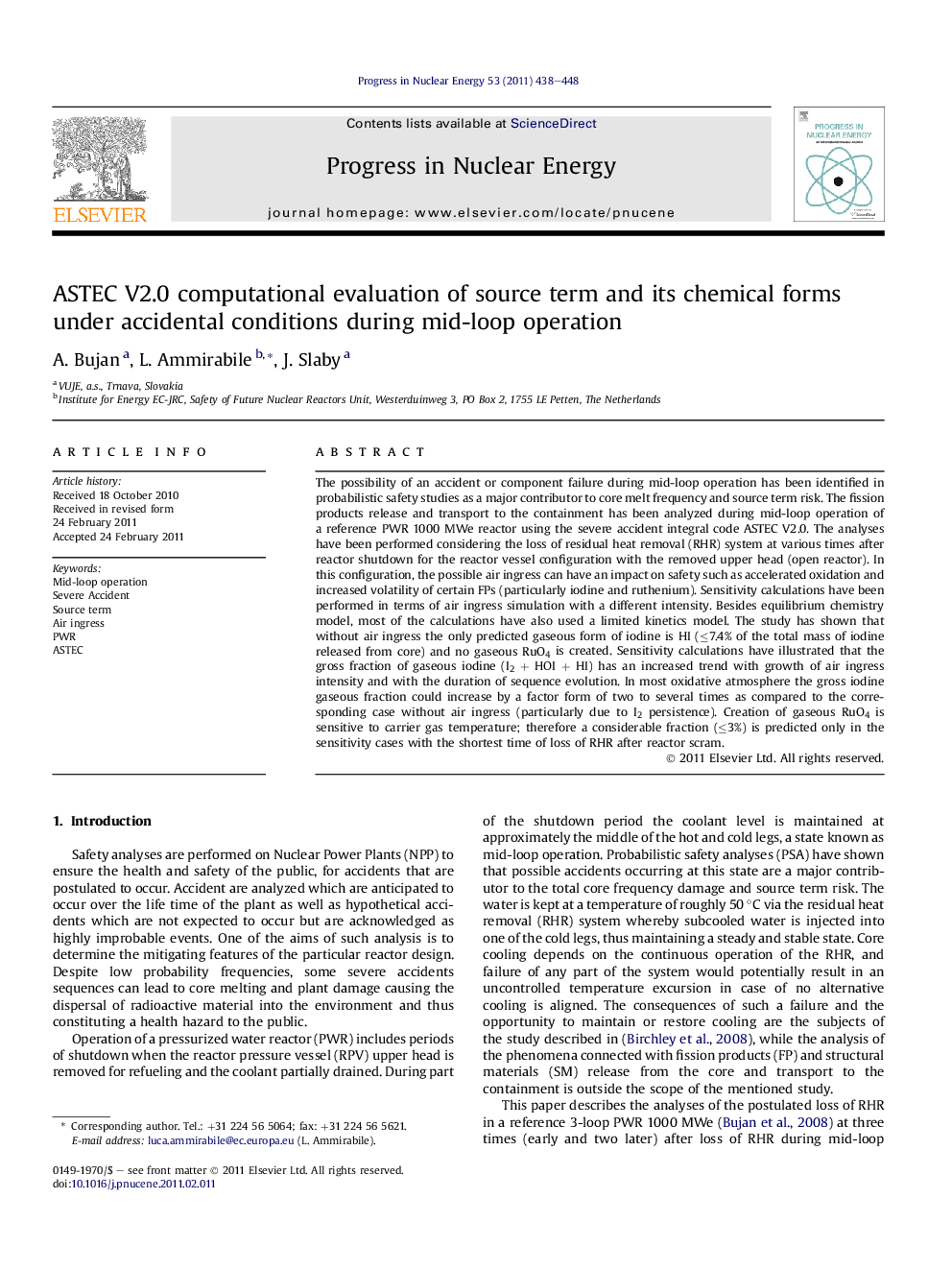| کد مقاله | کد نشریه | سال انتشار | مقاله انگلیسی | نسخه تمام متن |
|---|---|---|---|---|
| 1741067 | 1017373 | 2011 | 11 صفحه PDF | دانلود رایگان |

The possibility of an accident or component failure during mid-loop operation has been identified in probabilistic safety studies as a major contributor to core melt frequency and source term risk. The fission products release and transport to the containment has been analyzed during mid-loop operation of a reference PWR 1000 MWe reactor using the severe accident integral code ASTEC V2.0. The analyses have been performed considering the loss of residual heat removal (RHR) system at various times after reactor shutdown for the reactor vessel configuration with the removed upper head (open reactor). In this configuration, the possible air ingress can have an impact on safety such as accelerated oxidation and increased volatility of certain FPs (particularly iodine and ruthenium). Sensitivity calculations have been performed in terms of air ingress simulation with a different intensity. Besides equilibrium chemistry model, most of the calculations have also used a limited kinetics model. The study has shown that without air ingress the only predicted gaseous form of iodine is HI (≤7.4% of the total mass of iodine released from core) and no gaseous RuO4 is created. Sensitivity calculations have illustrated that the gross fraction of gaseous iodine (I2 + HOI + HI) has an increased trend with growth of air ingress intensity and with the duration of sequence evolution. In most oxidative atmosphere the gross iodine gaseous fraction could increase by a factor form of two to several times as compared to the corresponding case without air ingress (particularly due to I2 persistence). Creation of gaseous RuO4 is sensitive to carrier gas temperature; therefore a considerable fraction (≤3%) is predicted only in the sensitivity cases with the shortest time of loss of RHR after reactor scram.
► The loss of RHR in mid-loop operation for a reference 3-loop PWR 1000 has been studied with ASTEC V2.0.
► Without air ingress the only gaseous form of iodine is HI and no gaseous RuO4 is created.
► The gross fraction of gaseous iodine increases with air ingress intensity and accident duration.
► In oxidative atmosphere the gaseous iodine increases by several factor form than without air.
► Creation of gaseous RuO4 increases with the carrier gas temperature.
Journal: Progress in Nuclear Energy - Volume 53, Issue 4, May 2011, Pages 438–448